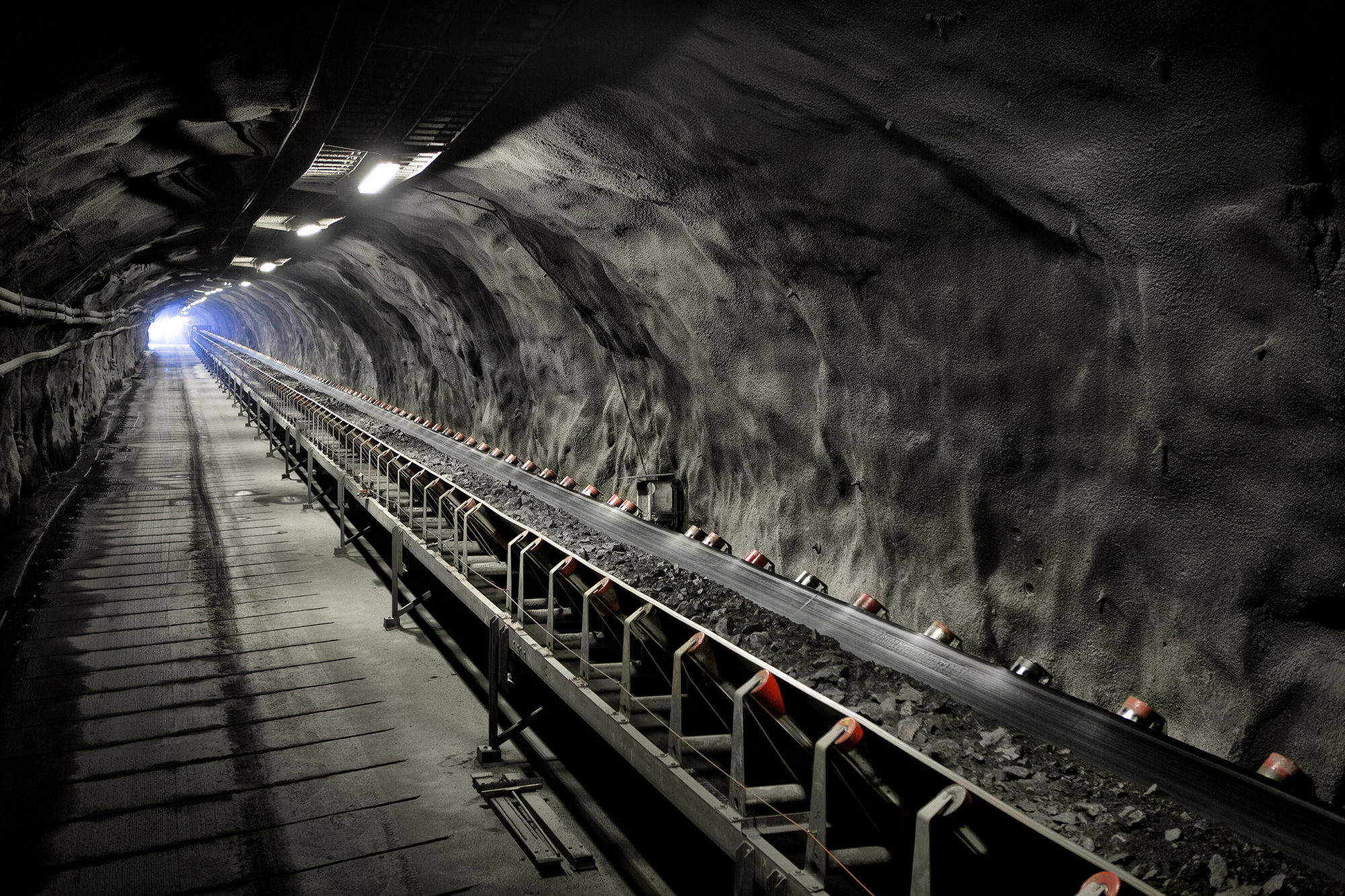The LKAB owned and operated Kiruna magnetite iron ore mine extracts some 27 Mt/y which is used to manufacture 15 Mt/y of finished products, and the material is mostly shipped in the form of pellets. The Swedish Ore Railway is used to transport it to the ports of Luleå and Narvik in Norway. At the loading station the trains tip out their freight, where conveyor belts either transport it to stockpiles or directly to the ships.
Kiruna uses conveyor belts from ContiTech to ensure that the ore is conveyed from depths of up to 1,365 m safely to its destination. The company also uses ContiTech technology in Narvik as well as at LKAB’s third-largest site, Gruvberget open-pit mine in the Svappavaara ore field. In Kiruna, there are around 350 individual conveyor systems making up a 21 km long conveyor. These conveyor belts transport 90 Mt of material a year.
A special service agreement, which was signed between LKAB and the service provider Vertech AB in close collaboration with ContiTech, ensures that all the conveyor belts at the site are functional at all times. This requires the presence of experts at the site day and night, seven days a week, to rectify any damage as quickly as possible. “Our conveyor belts are extremely hard-wearing, but there are of course instances where a defective belt piece needs replacing. Which is why we stock the relevant replacement parts in Kiruna. Every belt type is available in any required length, width, fabric and strength class. The longest belt sections in stock are 600 m long. It would take weeks for us to first produce the belt and then ship it to the far north,” explains Daniel Grimes from ContiTech.
Vertech supplies the fitters, ContiTech supplies the replacement belts and LKAB pays per metric ton transported. The balance is settled at the end of the year. The three contracting parties then share any profits or losses. In this way, the service agreement benefits all sides and acts as an incentive for failure-free operations.
It was ContiTech that engineered this unusual service agreement which requires exceptional trust-based, transparent and close cooperation between all parties involved. ContiTech conveyor belts have been in use at LKAB plants since the early 1990s. The first service agreement was concluded in 2001 and has proven to be a worthwhile undertaking to this day. For LKAB, the agreement provides additional advantages as it gives the company a much better overview of the costs. A budget was created as of the agreement start date. This factored in the value of the belts, the installation costs, the site labor costs and the stockholding costs. The calculation also takes into account the theoretical average service life of the belts. If a belt fails prematurely, absolute transparency is required.
“Has the belt simply worn out before its time or were the pellets too hot and not cooled down properly? In cases of system failure, the contract partners do all in their power to get to the root of the problem. Is there room for improvement on the maintenance front or is the damage to the belt all part and parcel of the usual stresses of operation? Sometimes there are discussions. But so far an agreement as always been reached. This requires a willingness to compromise, trust and the desire to find a solution. At the end of the day, the contract partners are all pursuing the same goal: smooth running of the belts. This is absolutely critical for cost efficiency. Accurate records are also kept. Once every six months, LKAB, ContiTech and Vertech go through all the data and review performance. Where do we stand? Where could we improve training for the service technicians further? How do we fare on issues such as industrial safety and environmental protection? The contracting parties discuss these and many more issues as a team.”
Industrial safety is essential when it comes to mining. This was one more reason why LKAB opted for ContiTech conveyor belts. ContiTech supplies belts made of self-extinguishing material. This is absolutely critical underground because pit fires have always been one of the biggest risks for miners. Burning conveyor belts could result in a fire with devastating consequences. But this will not happen in Kiruna. In the event of a fire, the ContiTech belts are self-extinguishing, which means that the flames are unable to spread along the whole length of the conveyor belt.
Mine operators who use ContiTech solutions get much more than just a conveyor belt that is specially designed to meet their needs: “We provide our customers with everything from one source – from technical advice, extensive planning and engineer-driven development all the way through to manufacturing and delivery of conveyor belts and components. Installation, commissioning, maintenance and monitoring of the belt round off the whole package. This is all perfectly coordinated to achieve the best possible operation and highest level of customer benefit,” emphasises Grimes.











